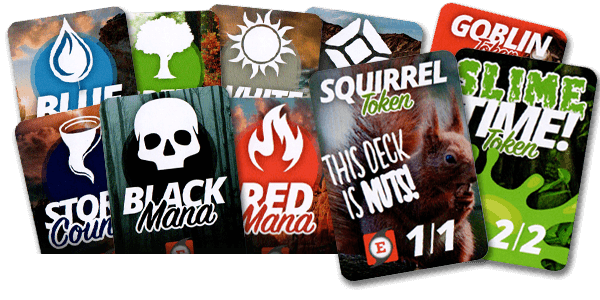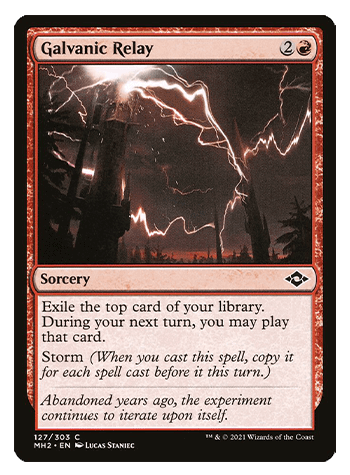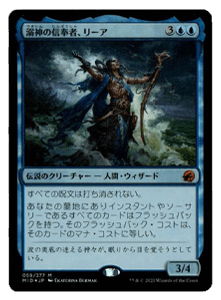!mbt is a common command in a couple of Twitch chats. It spits back out the meme, “I don’t know what that is, and I’m not playing around it”. For a long time in Legacy, playing against a [[Mindbreak Trap]] (MBT) was just someone’s choice addition as a sideboard slot. If it happened it happened and one just moved on to the next game. Unfortunately for The EPIC Storm (TES), [[Mindbreak Trap]] has not only become common, but stock in several archetypes throughout the format.
Where did all of these Mindbreak Traps Come From?
With the printing of the “spell lands”, such as [[Sea Gate Restoration / Sea Gate, Reborn]], from Zendikar Rising, many Legacy pilots have been testing strategies like Oops All Spells and Belcher again to see if the additional initial mana sources from these lands is powerful enough. With the blistering speed and consistency of these decks, non-blue decks do not have enough time to play a disruptive permanent. For those decks, [[Mindbreak Trap]] is a good solution to that problem as it is a hammer several matchups, including The EPIC Storm.
The other place that [[Mindbreak Trap]] has started appearing is in the sideboards of blue decks such as Snow Control. While they are playing fewer copies than the non-blue decks, the presence of the card causes TES more headaches in navigating the hard counters in addition to the copies of [[Mindbreak Trap]]. TES may be directly responsible for these sideboard slots appearing due to the reliance on [[Veil of Summer]] as the main source of protection. One of the reasons that [[Mindbreak Trap]] used to be significantly less effective at beating Storm decks in general is because of the pile of discard effects that beat it easily and provided enough information to play around it. With discard being much less effective in today’s metagame due to the number of [[Force of Will]] style effects blue opponents have and opposing copies [[Veil of Summer]], the effectiveness of [[Mindbreak Trap]] has increased significantly.
Combatting Mindbreak Trap
Given how effective discard has been in the past, going back to it may have been a natural first instinct to combat [[Mindbreak Trap]]. When [[Thoughtseize]] was brought back in during the [[Underworld Breach]] era to help beat [[Silence]], we found that the card was awkward for a few reasons. First, the life loss mattered a lot more now that there is a card with converted mana cost six in the deck. Second, discarding an opponent’s [[Force of Will]] and then immediately giving them the card back with [[Echo of Eons]] does not make a lot of sense. Third, there are still enough copies of [[Veil of Summer]] in the sideboard of many decks that [[Thoughtseize]] can be a liability as a secondary protection piece. As a team, we do not have unlimited time to test and we did not want to waste time on something we believe already is not effective.
Two options that the team did test were a copy of [[Flusterstorm]] and a copy of [[Pyroblast]]. When looking at how some sideboards have changed recently, Snow Control was playing fewer hate permanents and [[Chalice of the Void]] strategies are relatively rare. Because of this, the team tried the [[Flusterstorm]] and [[Pyroblast]] over an [[Abrupt Decay]] and a [[Chain of Vapor]]. Concurrently with this change, one other change was made: shifting to three copies of [[Defense Grid]] and three copies of [[Veil of Summer]]. This last change felt very influential in match ups where [[Mindbreak Trap]] was common. Adding the sideboard counter spells was not effective enough and the team brought back the removal spells. If you’re playing in Eternal Weekend, we recommend this:
the epic Storm
- 4 [[Burning Wish]]
- 4 [[Wishclaw Talisman]]
- 4 [[Brainstorm]]
- 4 [[Ponder]]
- 1 [[Tendrils of Agony]]
- 1 [[Ad Nauseam]]
- 1 [[Echo of Eons]]
- 3 [[Defense Grid]]
- 3 [[Veil of Summer]]
- 4 [[Rite of Flame]]
- 4 [[Dark Ritual]]
- 4 [[Lion’s Eye Diamond]]
- 4 [[Lotus Petal]]
- 3 [[Mox Opal]]
- 3 [[Chrome Mox]]
- 4 [[Bloodstained Mire]]
- 2 [[Polluted Delta]]
- 1 [[Verdant Catacombs]]
- 1 [[Underground Sea]]
- 1 [[Tropical Island]]
- 1 [[Volcanic Island]]
- 1 [[Taiga]]
- 1 [[Badlands]]
- 1 [[Swamp]]
- 4 [[Carpet of Flowers]]
- 2 [[Abrupt Decay]]
- 2 [[Chain of Vapor]]
- 1 [[Thoughtseize]]
- 1 [[Grapeshot]]
- 1 [[Empty the Warrens]]
- 1 [[Tendrils of Agony]]
- 1 [[Pulverize]]
- 1 [[Echo of Eons]]
- 1 [[Peer into the Abyss]]
[[Defense Grid]] is one of the best cards against RUG Delver, which is the best deck and one of the most common matchups in the format. It is also a piece of protection that works against [[Mindbreak Trap]]!
Frequency of Mindbreak Trap
In non-blue decks, if they are playing [[Mindbreak Trap]], most often it comes in sets of two or three. On the draw, they will more likely aggressively mulligan for it in order to have turn-zero interaction. Knowing how likely it is that an opponent can have a card is pretty important. The exact percentage is not important to memorize; but the relative percentages are good to know and get a feel for.
| Copies of MBT | 0 Mulligans | 1 Mulligan | 2 Mulligans | 3 Mulligans | 4 Mulligans |
|---|---|---|---|---|---|
| 1 Mindbreak Trap | 11.7% | 22.0% | 31.1% | 39.1% | 46.2% |
| 2 Mindbreak Traps | 22.1% | 39.4% | 52.8% | 63.3% | 71.4% |
| 3 Mindbreak Traps | 31.5% | 53.1% | 67.9% | 78.0% | 85.0% |
| 4 Mindbreak Traps | 39.9% | 63.9% | 78.3% | 87.0% | 92.2% |
This table assumes that an opponent would mulligan a hand without [[Mindbreak Trap]]. You can use this table to help figure how likely it is for an opponent to have a [[Mindbreak Trap]] as opposed to a hate bear that they have four copies of. Generally, it is more likely that an opponent will have their hate bear as they have more copies of it.
Playing around Mindbreak Trap
The most important part of playing around [[Mindbreak Trap]] is to figure out if one should. Evaluating hands as if an opponent does have [[Mindbreak Trap]] as opposed to a lock piece and vice versa is important. Opening on an [[Abrupt Decay]] or a [[Chain of Vapor]] gives you a lot of freedom to play around [[Mindbreak Trap]] because answering a lock piece is possible.
When given the freedom to play around [[Mindbreak Trap]], the best way is to leverage the power of [[Burning Wish]] and [[Wishclaw Talisman]]. Unlike [[Infernal Tutor]], these cards help combo over multiple turns. When trying to beat [[Mindbreak Trap]], playing out a bunch of artifacts, a [[Wishclaw Talisman]], and then passing to cast [[Ad Nauseam]] on storm one is the easiest way to do it. [[Burning Wish]] can find [[Echo of Eons]] or [[Peer into the Abyss]] and then cast either engine card on storm one or two on the next turn.
Unfortunately, [[Mindbreak Trap]] is not the only disruption that most opponents will have. Slowing down to beat [[Mindbreak Trap]] will often times give opponents the time they need to play out permanent-based hate or find removal spells, such as [[Force of Vigor]] or [[Skyclave Apparition]]. Balancing playing around all of these things is difficult and sometimes an opponent has all of them. Those types of games are just difficult to win and that happens. Sometimes an opponent’s actions and decisions can give hints at what they actually have between [[Mindbreak Trap]], lock pieces, and removal.
Reading an opponent’s opening is key to figuring out if they have [[Mindbreak Trap]]. If on the surface, it appears that there was no reason for them to keep their hand, playing around [[Mindbreak Trap]] more makes sense. For example, if a goblins opponent attacks with a [[Goblin Lackey]] and has nothing to put into play with it, one could be almost sure that that opponent mulliganed to [[Mindbreak Trap]]. Every decision an opponent makes has a reason behind it. Figuring out why they may have kept what appears to be a mediocre or bad hand is key to sussing out a [[Mindbreak Trap]]. An opponent leaving cards in hand and mana up may also signal that they have [[Mindbreak Trap]] or removal spells. Most non-blue decks will just play their cards if they can against TES in order to present a clock. Leaving cards and mana up most likely represents some sort of interaction.
You Can’t Beat Everything
It is sometimes just correct to jam into a possible [[Mindbreak Trap]]. Making your opponent have the exact answer to something game winning can be the correct play. Most of the time against non-blue decks I would still jam a turn one combo, especially on the draw. Choosing what to play around in Legacy is a bit of an art and not always an exact science. Sometimes it is better just to !mbt (I don’t know what that is and I’m not playing around it), but being aware of the possible interaction is always a good plan.





